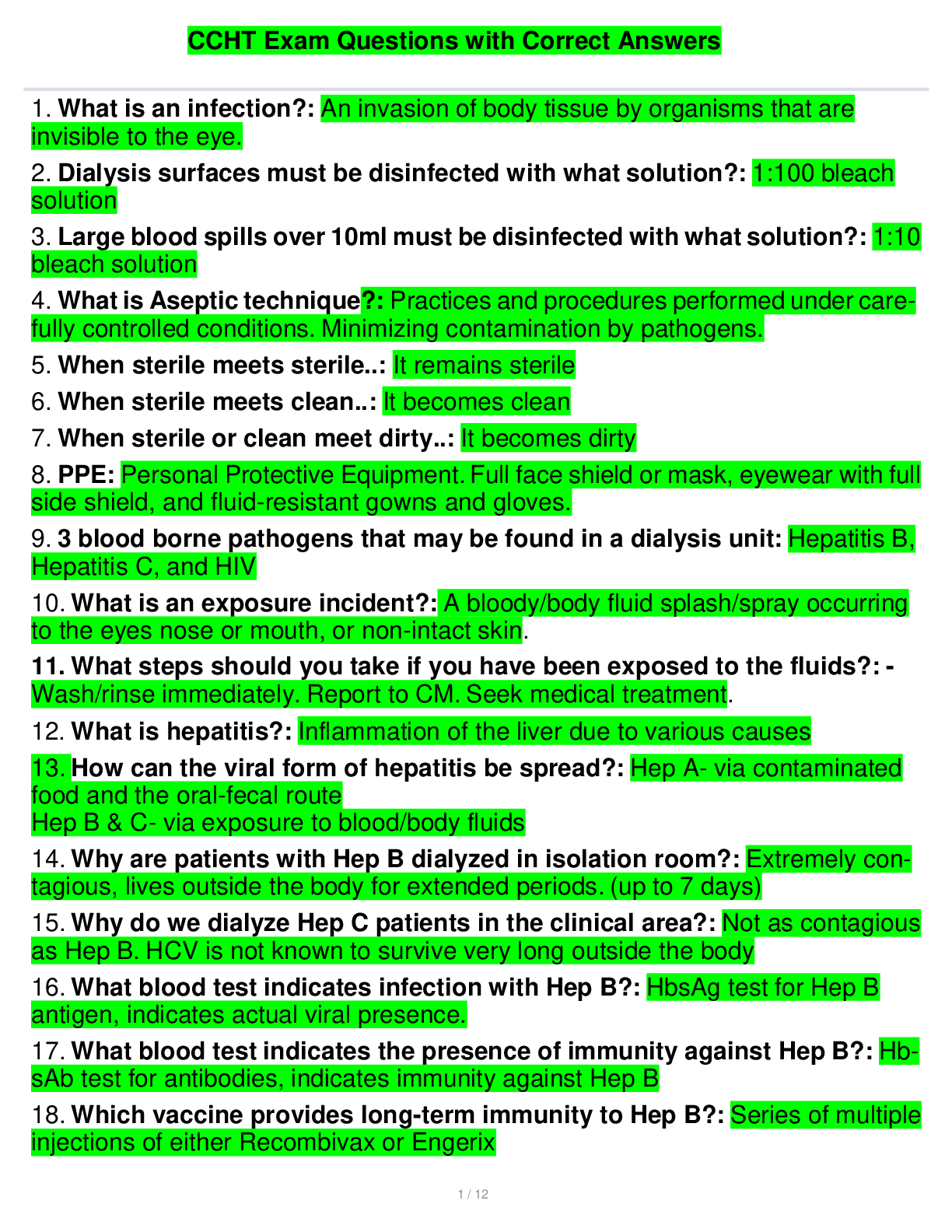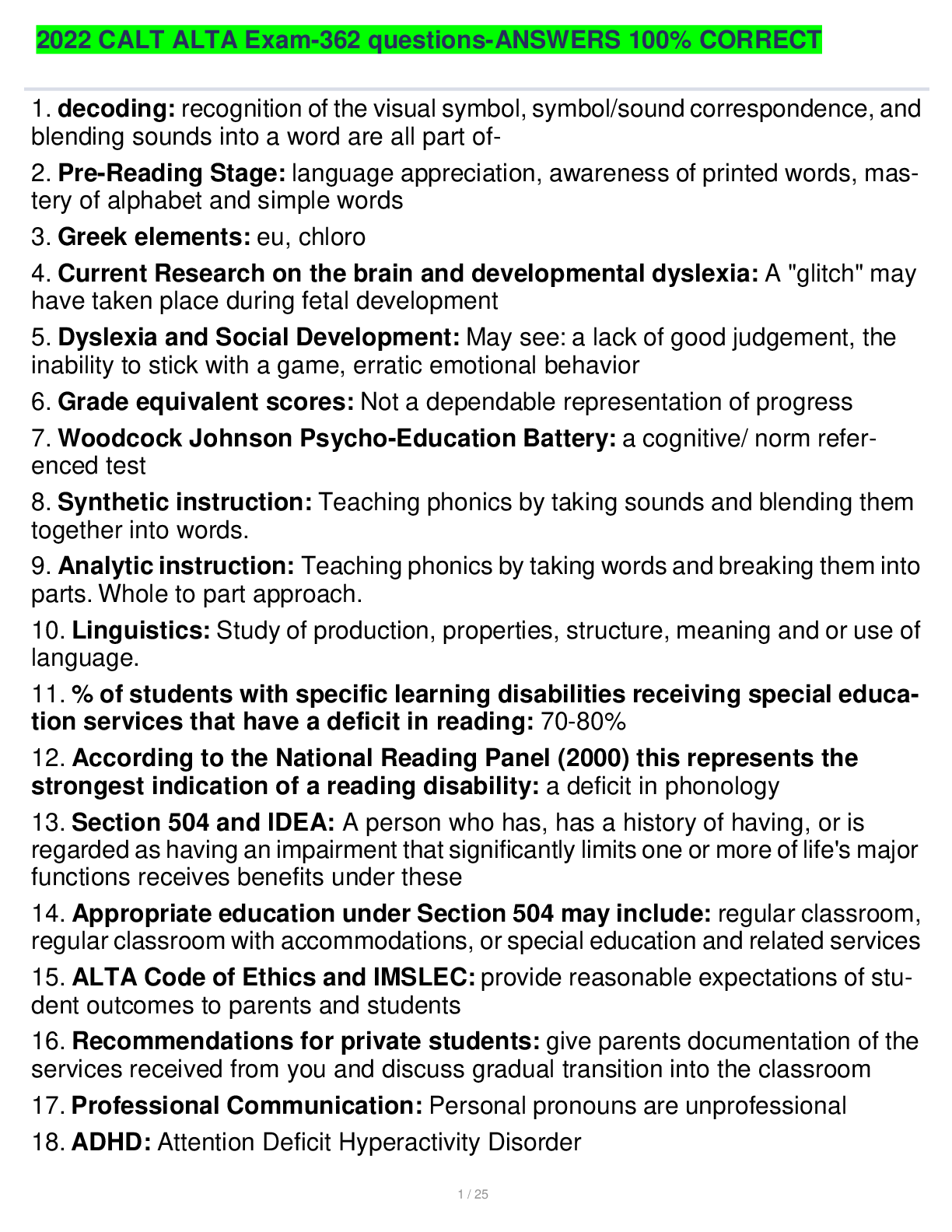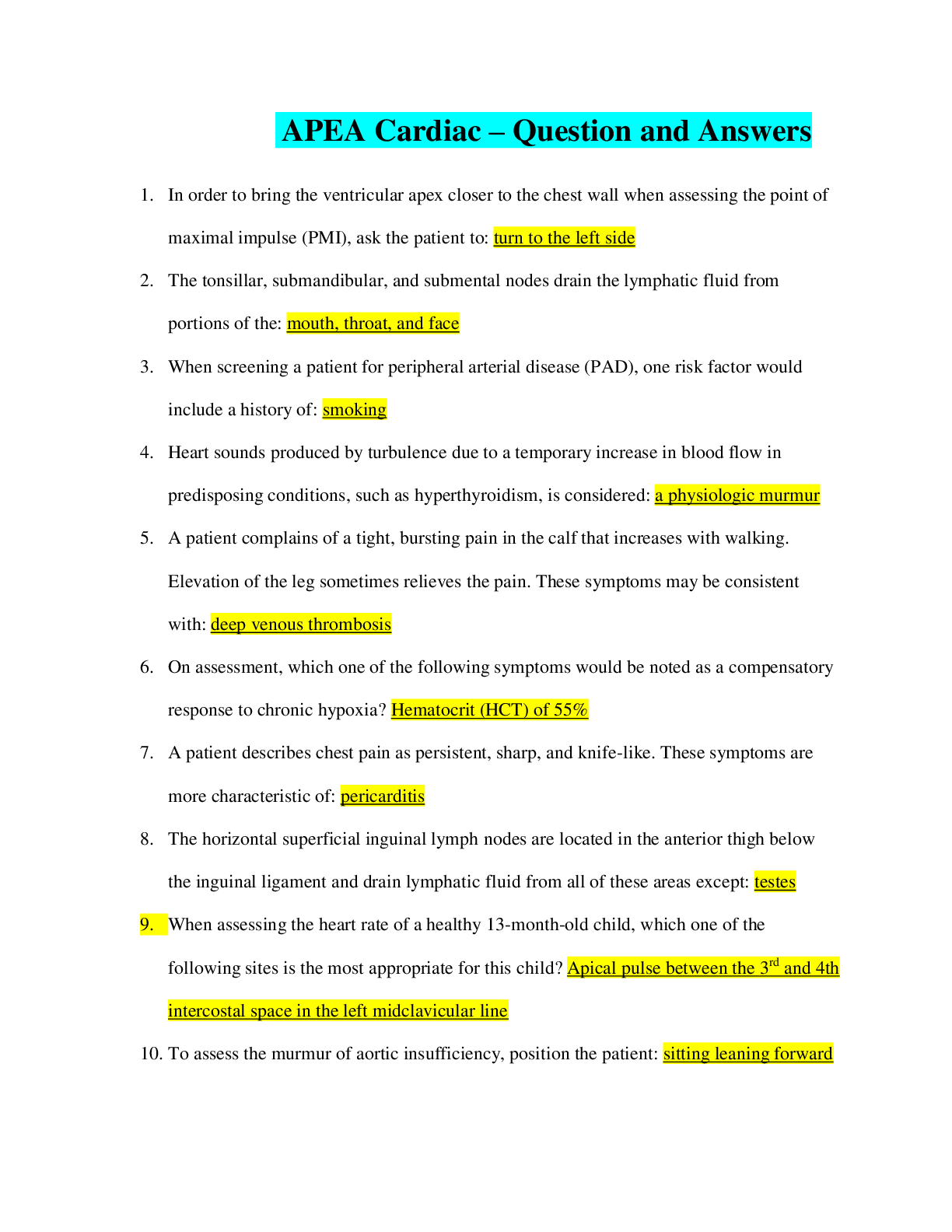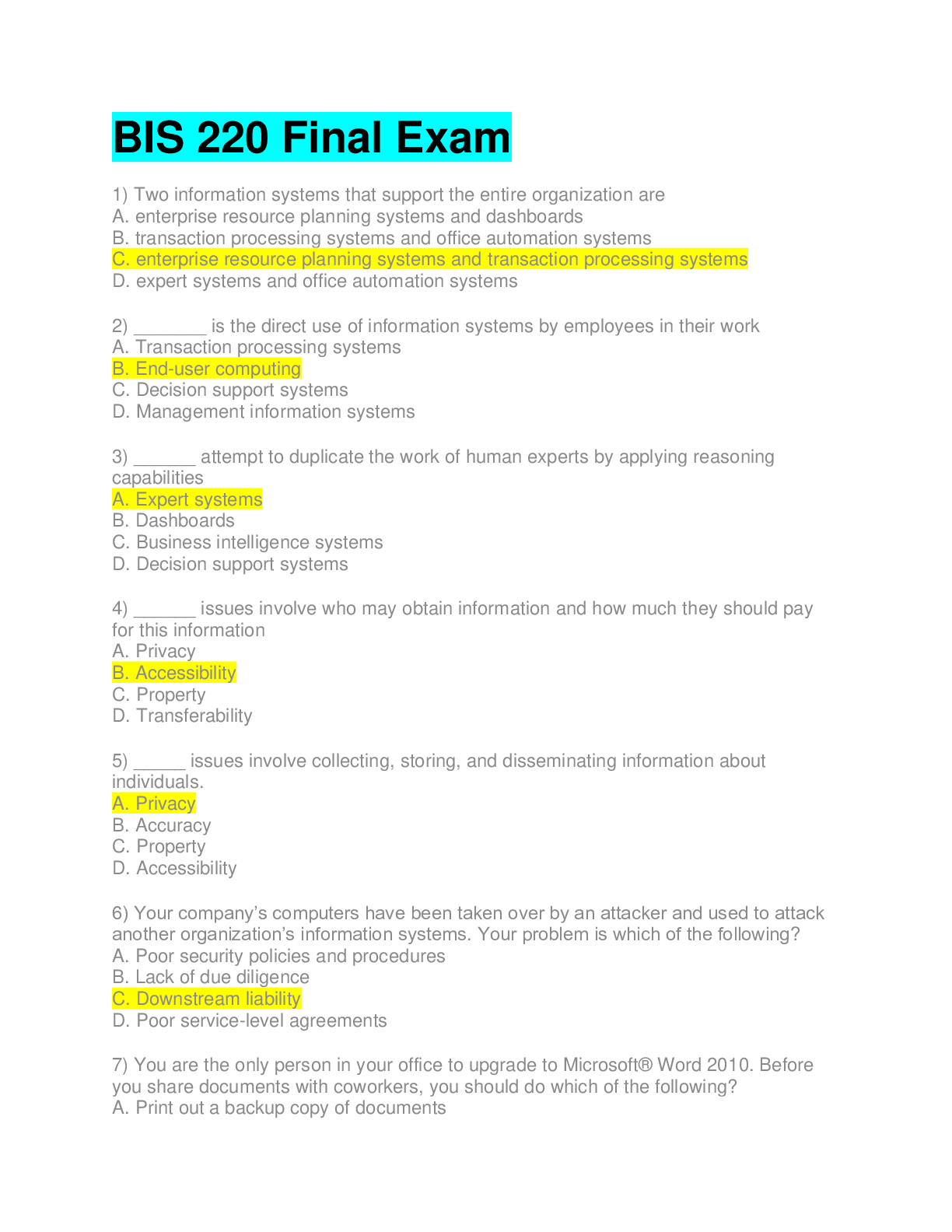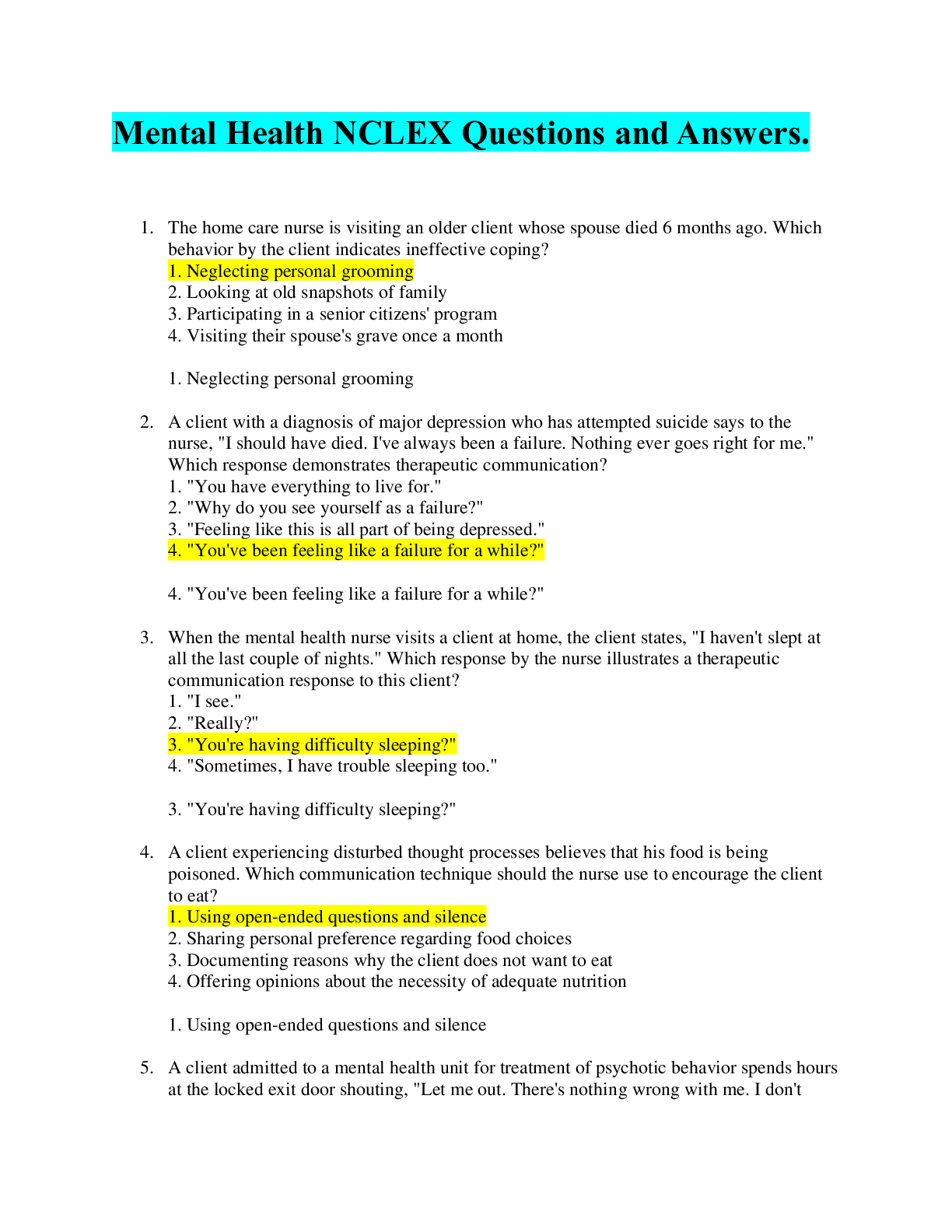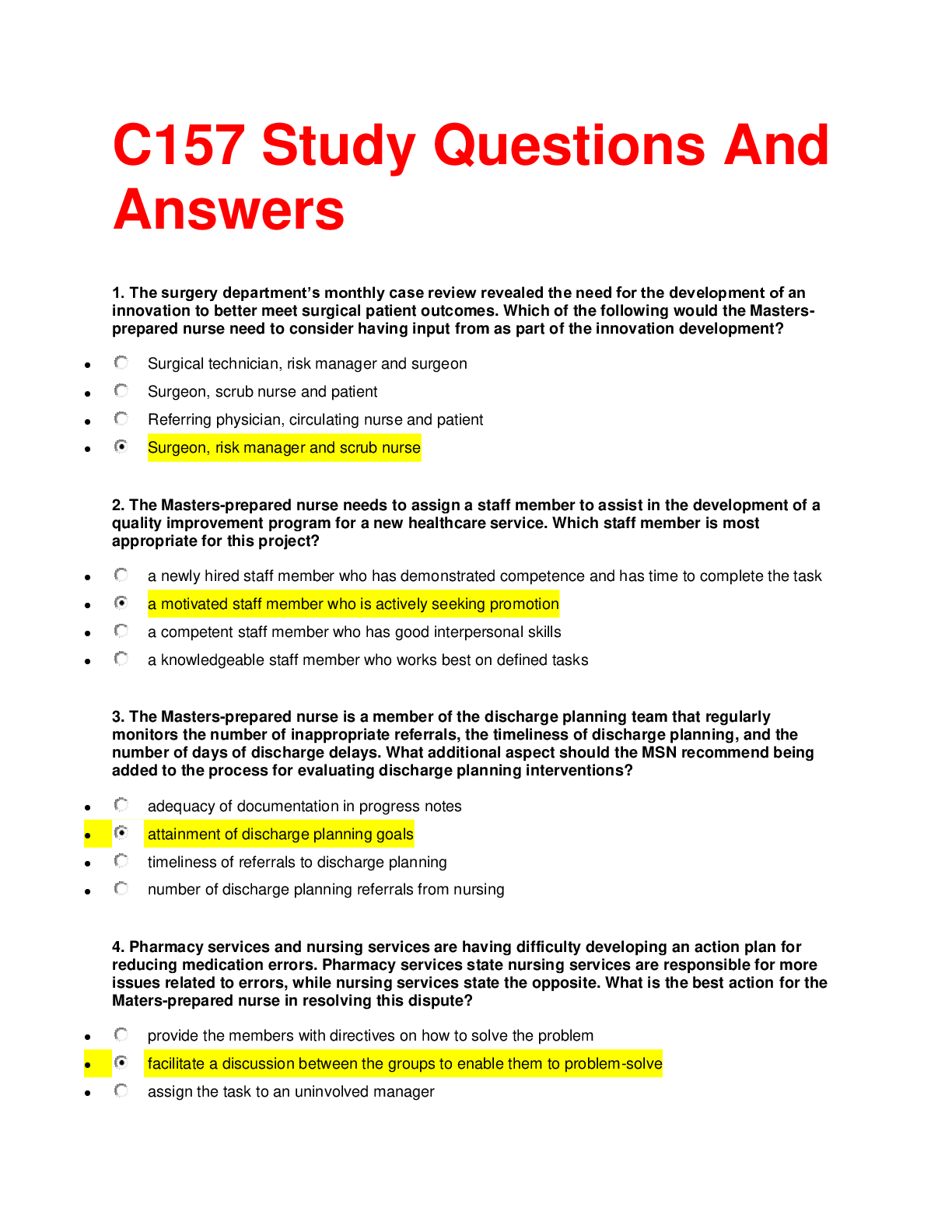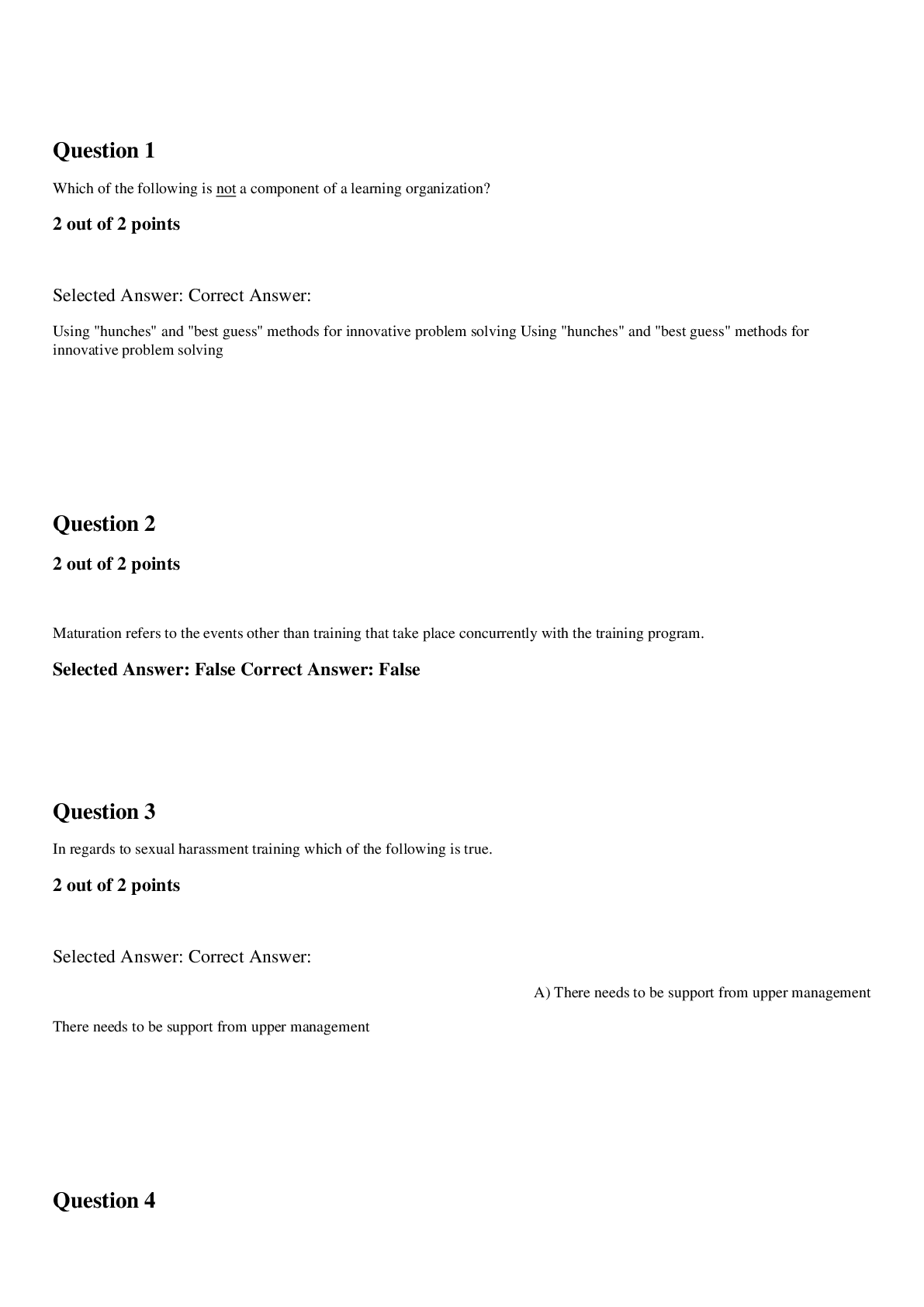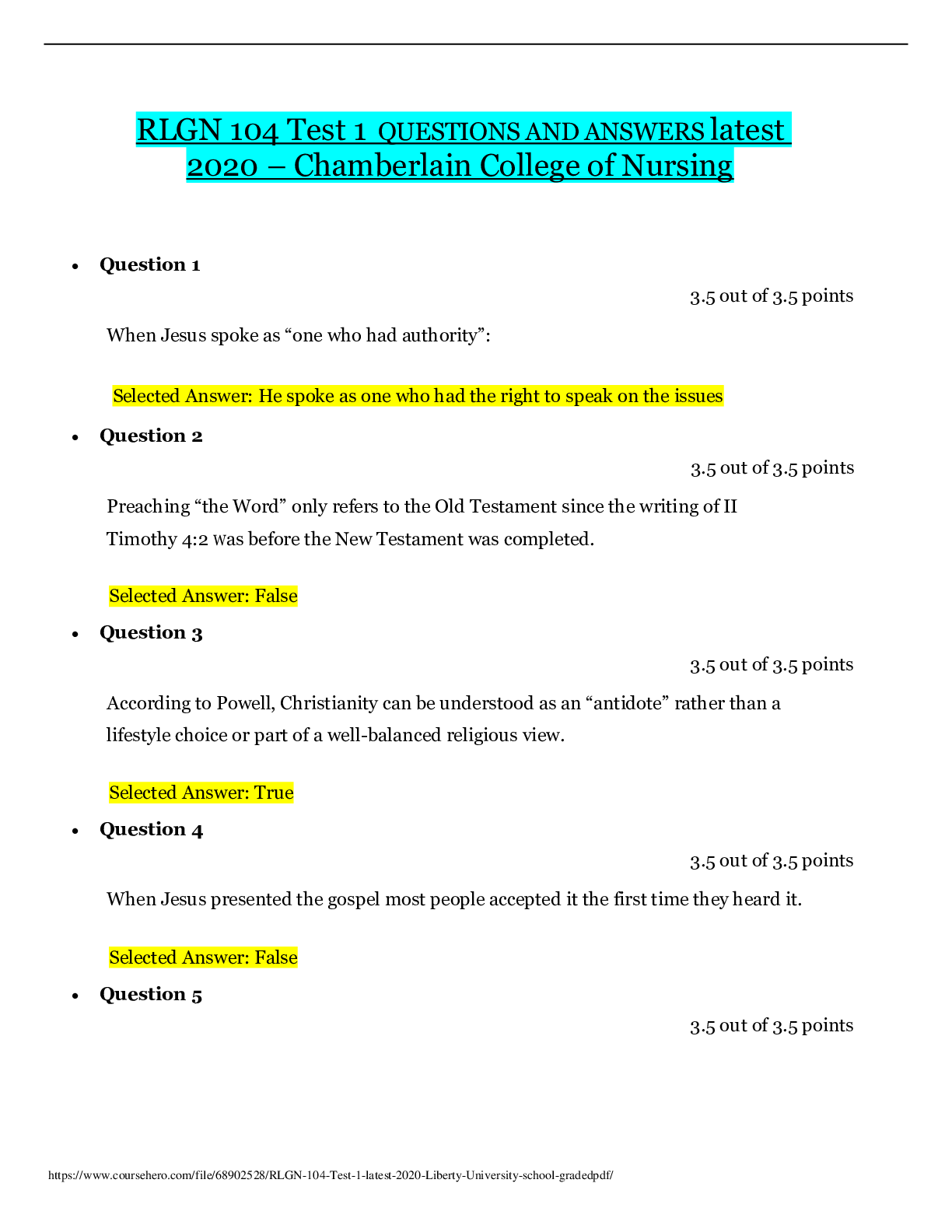*NURSING > QUESTIONS & ANSWERS > NR 283: Final Exam Questions and Answers Latest 2021 Already Graded A+(CHAMBERLAIN COLLEGE OF NURSIN (All)
NR 283: Final Exam Questions and Answers Latest 2021 Already Graded A+(CHAMBERLAIN COLLEGE OF NURSING)
Document Content and Description Below
1. The nurse is caring for a patient who is 3 days post-op bowel resection surgery. The nurse is monitoring the patient for possible bowel obstruction. Which of the following should the nurse suspect ... is a sign of bowel obstruc- tion?: Marked abdominal distension 2. What is the most common assessment finding in a patient with ulcerative colitis?: Profuse diarrhea 3. What typical changes occur with Crohn's Disease?: Inflamed areas of the wall of the ileum alternating with thick fibrotic or normal areas 4. What is a typical early sign of cancer in the ascending colon?: Occult blood in the stool 5. The nurse is providing discharge teaching to a patient with acute pyelonephritis. The nurse explains that the patient must obtain a follow-up urine culture in four weeks to evaluate the: Prescribed medications were effec- tive 6. The nurse is conducting an initial assessment of a patient who presents with edema, hypertension, and decreased urine output. Additionally, the patient reports a history of strep throat approximately 3 weeks ago. Based on this information, which of the following does the nurse suspect the patient is experiencing.: Acute glomerulonephritis 7. All of the following may precipitate a seizure except:: Hypoventilation 8. A 17-year-old male presents to the Emergency Department with a severe right lower quadrant abdominal pain, nausea, vomiting and reported fever of 100.4 F. The patients lab work shows that the WBC count is 17,000/mm3. Which of the following does the nurse suspect is wrong with the patient?: - Acute appendicitis 9. What is the cause of Type 1 Diabetes Mellitus?: Immune destruction of the pancreas 10. What is the main purpose of the glycosylated hemoglobin (hemoglobin A1C) test?: Monitoring long-term serum glucose control 11. Which physical feature supports the diagnosis of Cushing Syndrome: - Truncal obesity and moon face 12. Which of the following people is at highest risk for the development of gout?: Men aged 40-50 years 13. Which of the following hormonal imbalances causes diabetes insipidus?- : Deficit of ADH [Show More]
Last updated: 2 years ago
Preview 1 out of 2 pages
.png)
Buy this document to get the full access instantly
Instant Download Access after purchase
Buy NowInstant download
We Accept:

Reviews( 0 )
$8.00
Can't find what you want? Try our AI powered Search
Document information
Connected school, study & course
About the document
Uploaded On
Oct 22, 2022
Number of pages
2
Written in
Additional information
This document has been written for:
Uploaded
Oct 22, 2022
Downloads
0
Views
128

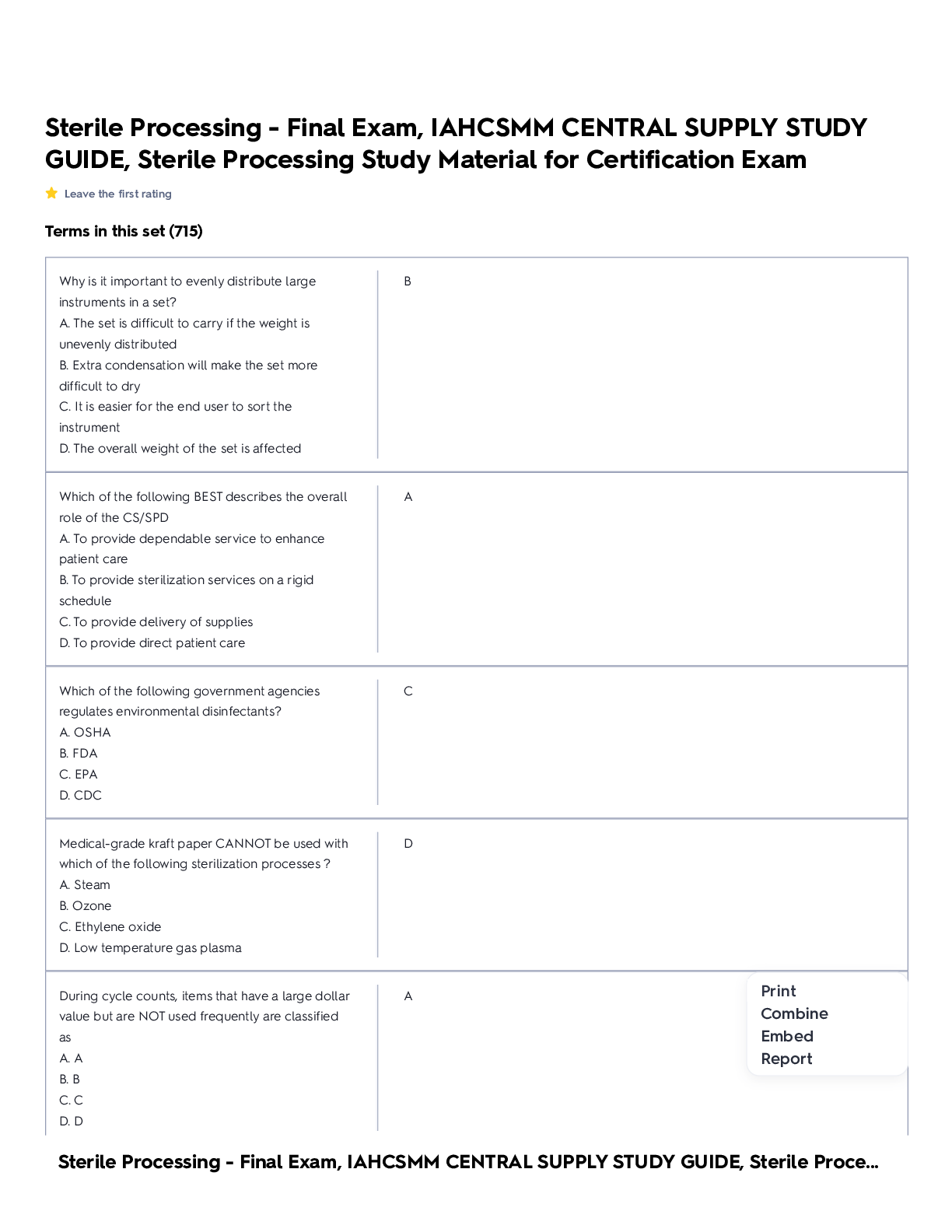

 with Complete Solution.png)
 Career Information with Complete Solution.png)


 for E-6 Career Information_watermark.png)
